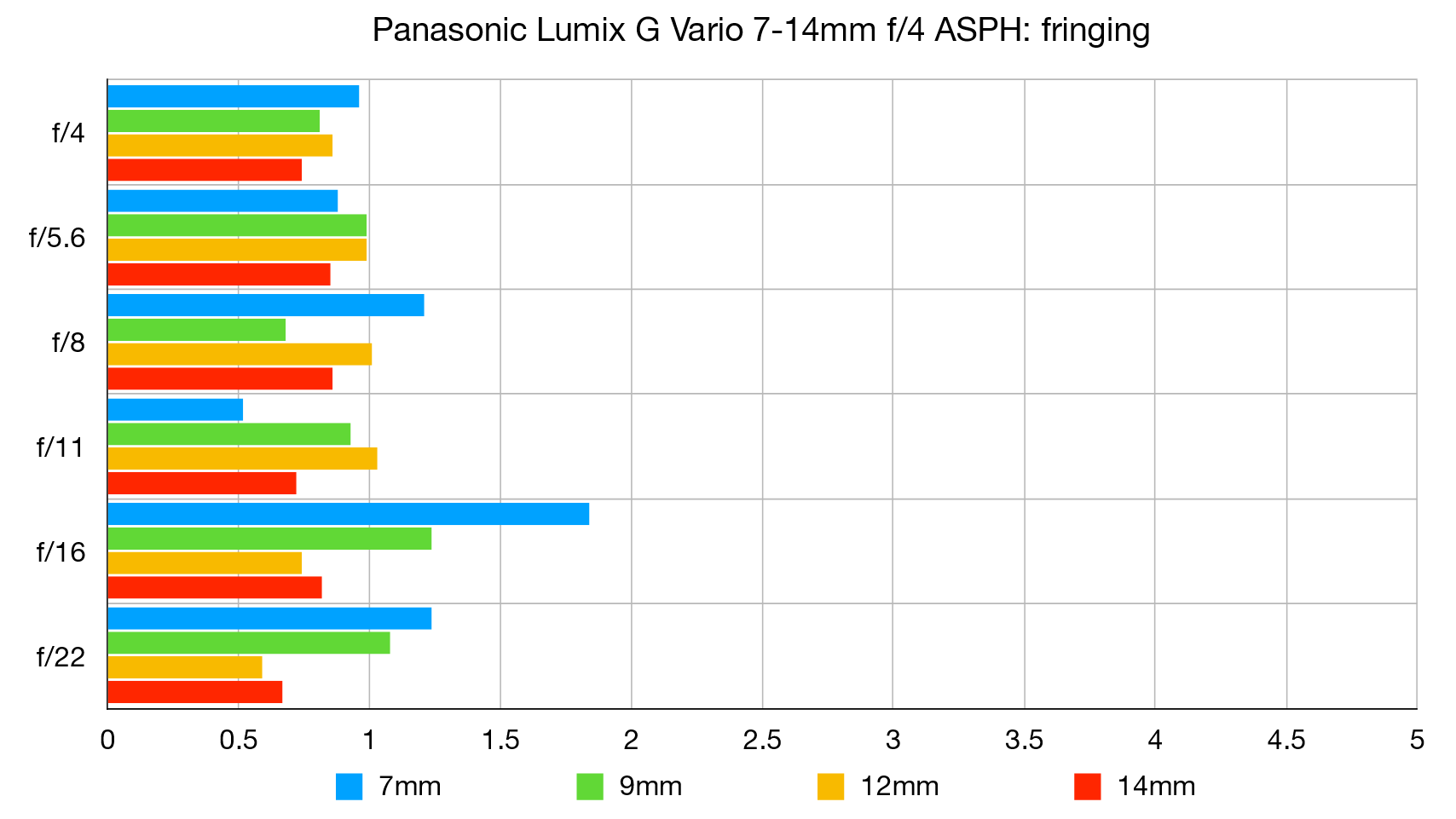Digital Camera World Verdict
Designing ultra-wide-angle rectilinear rather than fisheye lenses for Micro Four Thirds cameras is a technical challenge. The 2x crop factor requires very short focal lengths for this type of lens and, as such, the Panasonic shrinks to just 7mm at its shortest zoom setting. Even so, performance and overall image quality are very good and the compact, lightweight construction features impeccable build quality along with constant f/4 aperture. It’s pretty pricey to buy but a very attractive proposition.
Pros
- +
Generous maximum field of view
- +
Pleasing image quality
- +
Impressive build quality
Cons
- -
Modest autofocus speed
- -
No filter attachment thread
- -
Mediocre edge-sharpness at 7mm
Why you can trust Digital Camera World
The Panasonic Lumix G Vario 7-14mm f/4 ASPH was an important addition to the MFT range, proving the viability of the system by extending into ultra-wide-angle territory. It dates back to 2009 and was only the third MFT lens that Panasonic launched. It’s worth noting that there’s also a faster Olympus M.ZUIKO DIGITAL ED 7-14mm 1:2.8 PRO for MFT cameras, which is naturally a whole f/stop faster but is the best part of twice the weight and twice the price to buy. The Panasonic f/4 is amazingly lightweight at just 300g.
Specifications
Mount: Micro Four Thirds
Full frame: No
Autofocus: Yes
Image stablization: No
Lens construction: 16 elements in 12 groups
Angle of view: 114 to 75 degrees
Diaphragm blades: 7
Minimum aperture: f/22
Minimum focusing distance: 0.25m
Maximum magnification ratio: 0.08x
Filter size: None
Dimensions: 75x83mm
Weight: 300g
Key features
Despite being particularly small and lightweight for an ultra-wide-angle zoom, the Panasonic features no less than 16 elements in 12 groups, including two aspherical elements and two ED (Extra-low Dispersion) elements. With an ‘effective’ zoom range of 14-28mm in full-frame terms, it goes a little wider than many zooms for crop-sensor cameras, delivering a maximum viewing angle of 114mm.
There’s a wonderfully high-precision feel to the lens’s build and handling, and the added attraction of a constant-aperture design. This can be very useful in both stills and video capture. One drawback, however, is that the lens hood is built into the forward end of the barrel so you can’t attach screw-in filters or filter-holders.
Performance

The stepping motor autofocus system is practically silent in operation but not particularly fast. Sharpness at the center of the frame is very good and generally well maintained right out to the corners, even when using the widest f/4 aperture. As usual with lenses for MFT cameras, corrections are applied automatically for color fringing and distortions.
Lab results
We run a range of lab tests under controlled conditions, using the Imatest Master testing suite. Photos of test charts are taken across the range of apertures and zooms (where available), then analyzed for sharpness, distortion and chromatic aberrations.
We use Imatest SFR (spatial frequency response) charts and analysis software to plot lens resolution at the center of the image frame, corners and mid-point distances, across the range of aperture settings and, with zoom lenses, at four different focal lengths. The tests also measure distortion and color fringing (chromatic aberration).
Sharpness:
Lab scores reveal that the Panasonic delivers excellent center-sharpness at all focal lengths but that edge-sharpness is merely average at the short end of the zoom range.
Fringing:
Even after automatic in-camera correction, color fringing is a bit more noticeable than with most lenses for Micro Four Thirds cameras.
Distortion:
The best camera deals, reviews, product advice, and unmissable photography news, direct to your inbox!
Thanks to in-camera corrections, distortions are well-controlled, ranging from slight barrel at short and medium zoom settings, to slight pincushion at the long end.
Verdict
Designing ultra-wide-angle rectilinear rather than fisheye lenses for Micro Four Thirds cameras is a technical challenge. The 2x crop factor requires very short focal lengths for this type of lens and, as such, the Panasonic shrinks to just 7mm at its shortest zoom setting. Even so, performance and overall image quality are very good and the compact, lightweight construction features impeccable build quality along with constant f/4 aperture. It’s pretty pricey to buy but a very attractive proposition.
Read more:
• Best camera lenses to get
• Best macro lenses
• Best telephoto lenses
• Best wideangle lenses
• Best fisheye lenses
Matthew Richards is a photographer and journalist who has spent years using and reviewing all manner of photo gear. He is Digital Camera World's principal lens reviewer – and has tested more primes and zooms than most people have had hot dinners!
His expertise with equipment doesn’t end there, though. He is also an encyclopedia when it comes to all manner of cameras, camera holsters and bags, flashguns, tripods and heads, printers, papers and inks, and just about anything imaging-related.
In an earlier life he was a broadcast engineer at the BBC, as well as a former editor of PC Guide.






